Newsom called it a ‚Äėgimmick.‚Äô Now he‚Äôs using the trick to lower California‚Äôs massive deficit
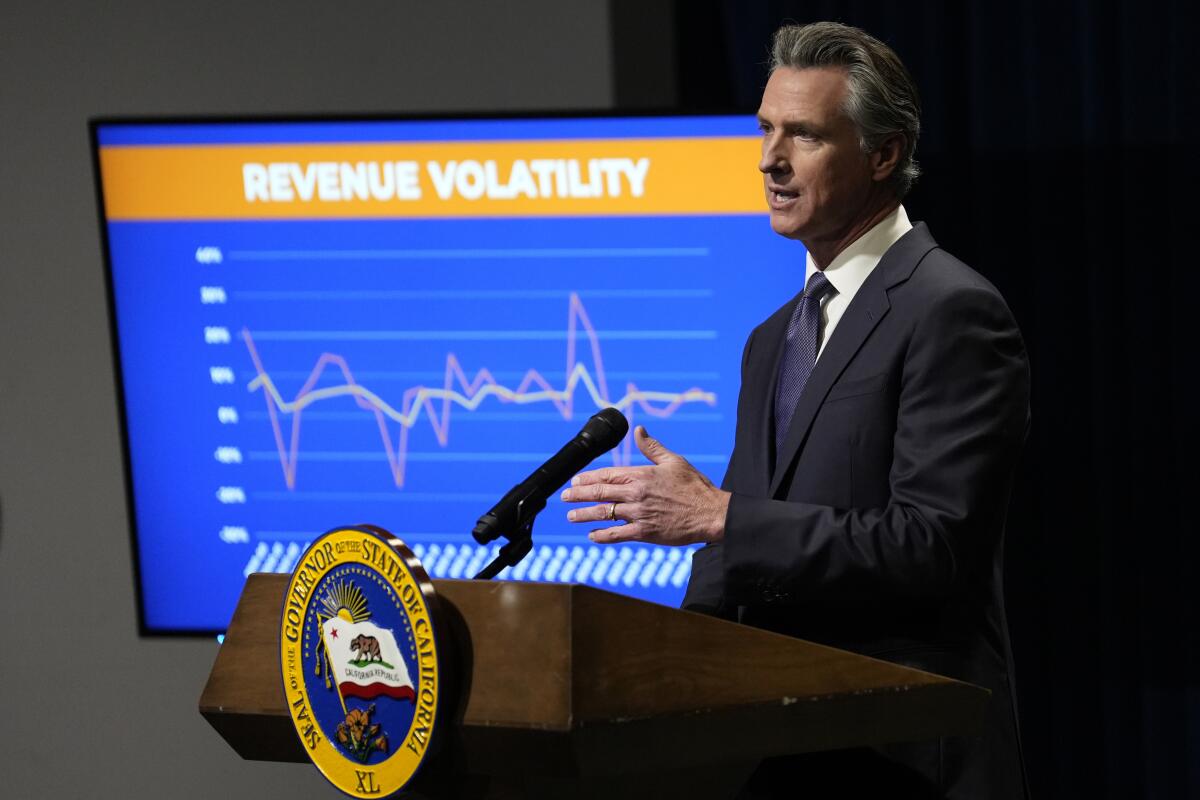
SACRAMENTO ‚ÄĒ With a windfall of cash five years ago, Gov. Gavin Newsom said he was doing away with a state budget ‚Äúgimmick‚ÄĚ one of his predecessors relied on to shave about $800 million off a deficit during the Great Recession.
The accounting trick, adopted in 2009, delayed state worker payroll from the end of one fiscal year on June 30 to the start of the next on July 1. A decade later Newsom spent nearly $1 billion to end the subterfuge, with one caveat.
‚ÄúIf I use it in six years, in a recession, forgive me,‚ÄĚ Newsom said.
At his urging, Newsom and lawmakers have agreed to use the budget gimmick next year even though California isn’t in a recession.
The tactic is one of several maneuvers Democrats are relying on to reduce a historic budget deficit of at least $37.9 billion by pushing their spending problem forward to another year.
Of the $17.3 billion in budget reductions Newsom and Democrats have agreed to so far, only $3.6 billion are actual cuts.
Lawmakers made the first of those cuts Thursday and passed a budget trailer bill that lowers unspent funding allocations in 2022-23 and 2023-24 by $1.6 billion. Though Newsom touted the changes as part of an ‚Äúearly action‚ÄĚ deal to shrink the deficit in April, many of the reductions won‚Äôt be reflected in legislation until June or later.
At least so far, Newsom and lawmakers are largely relying on mechanisms other than cuts to shrink the deficit: borrowing $5.2 billion, delaying and deferring $5.2 billion in funding for state-sponsored programs to subsequent years and tapping into $3.4 billion from separate state funds. Democrats also agreed to draw down at least another $12.2 billion from the rainy day fund to cover their spending.
Budget watchers and Republican lawmakers criticized the strategy, saying that resorting to clever accounting now and dipping into California’s savings account while the economy remains strong will make the state more vulnerable to drastic cuts if a recession hits in the years ahead and revenue declines.
Newsom‚Äôs critics blame the governor and Democrats for overspending and causing the deficit. The ‚Äúgimmick‚ÄĚ is an example of what his critics view as Democrats failing to make the kind of tough choices that California households are forced to weigh when they spend more money than they bring in.
‚ÄúThey are doing things that you normally do in a recession and there is no recession here,‚ÄĚ said David Crane, president of Govern for California, a nonprofit that seeks to oppose the influence of labor unions on state government. ‚ÄúYou shouldn‚Äôt have to be dipping into reserves to meet a budget deficit if your revenues are 50% higher than they were when you came into office.‚ÄĚ
Democratic lawmakers and Gov. Gavin Newsom are scrambling to lessen California’s budget deficit, which Newsom estimated at $37.9 billion in January.
General fund revenues, which the state uses to pay for most public services, were $140 billion when Newsom took office in in 2018-19. The governor’s January budget assumes revenues of more than $214 billion, an increase of 53%, for the upcoming fiscal year when Democrats plan to cut the rainy day fund in half.
According to the UCLA Anderson Forecast in March, California’s economy is growing faster than the rest of the nation and the possibility of a U.S. recession is fading. Newsom regularly trumpets the strength of the state economy.
‚ÄúWhile there are still challenges ahead ‚ÄĒ notably, state and local government finance, homelessness and out-migration ‚ÄĒ the forces driving California‚Äôs economy remain robust,‚ÄĚ UCLA economists wrote.
H.D. Palmer, a spokesperson for the governor’s Department of Finance, said the cuts Democrats have agreed to so far are part, but not all of the solution to the budget woes with more decisions coming in June. He also pointed to the fact that more than 70% of the general fund is spent on K-12 education, healthcare and human services.
‚ÄúIf you don‚Äôt agree with these solutions, that‚Äôs fine. What specific proposals would you offer up to offset that in terms of programmatic reductions?‚ÄĚ he asked of budget critics.
Assembly Republican leader James Gallagher of Yuba City said he would start by funding the fundamentals, such as education, infrastructure and public safety, and then deciding what else the state has resources for.
Newsom often promotes all the one-time funding in his prior budgets, which he said would be easy to stop if the state swung from surplus to shortfall. But he has continued to support many of his expensive political priorities, such as the expansion of Medi-Cal to all eligible low-income immigrants, regardless of their legal status. A state audit also found that California has failed to monitor the effectiveness of its costly homelessness programs, which Newsom and lawmakers have spent $20 billion on over the last five years.
The California State Auditor’s Office analyzed homelessness spending at the behest of lawmakers concerned about efficacy.
‚ÄúA $73-billion deficit is no joke,‚ÄĚ Gallagher said. ‚ÄúIt‚Äôs a serious problem we‚Äôve got to address. It makes me think that the governor just wants to ride this out until the end of his term and just leave this problem to somebody else.‚ÄĚ
A combination of delayed tax deadlines and overspending based on inaccurate budget projections created the budget shortfall, which happens when spending exceeds projected revenues.
Newsom and lawmakers expected revenues to fall below projections because of a declining stock market, high interest rates and increased inflation, but the deficit is much worse than the state accounted for last June. The Newsom administration last pegged the deficit at $37.9 billion in January, though a more recent estimate from the Legislative Analyst’s Office suggests it could be up to $73 billion by the time the governor unveils his revised budget proposal in mid-May.
The state budget in California is largely dependent on income taxes paid by its highest earners. Revenues are prone to volatility, hinging on capital gains from investments, bonuses to executives and windfalls from new stock offerings, and notoriously difficult for the state to predict.
The governor repeatedly blames the shortfall problem on a decision by the federal government to delay the deadline to file 2022 income tax returns from April to November of last year due to winter storms.
In a typical budget year, state government has tax receipts in hand before the governor unveils a revised budget proposal in mid-May and before he reaches a final spending agreement with lawmakers in June. The tax delay forced lawmakers and the governor to enact the current budget in July based on estimates of how much money the state would collect in tax revenues by the November deadline. Those estimates were wildly off.
The legislation approved Thursday goes back and reduces unspent funding in the prior and current budget years. The changes include cutting $45 million for protecting communities from wildfire, $88 million for watershed resilience and reduces funding to expand broadband internet access by $34 million, among other trims.
The bill was part of the ‚Äúearly action‚ÄĚ lawmakers and the governor announced that they would take in April to lower the deficit by $17.3 billion before the May revise. But only $3.3 billion of the reductions he claimed they would make can be adopted in law now, and the majority will be included in the final budget agreement, along with other reductions, approved this summer.
Facing a shortfall of at least $38 billion, Gov. Gavin Newsom and legislative leaders said they have agreed to $12 billion to $18 billion in cuts but offered no details.
‚ÄúWe put forward this early action plan to protect our progress and safeguard core programs so that we could spend time and energy on the more challenging decisions to close the remaining budget gap responsibly,‚ÄĚ said Senate President Pro Tem Mike McGuire (D-Healdsburg) during floor debates in the Senate on Thursday. ‚ÄúAnd we‚Äôre gonna do just that.‚ÄĚ
Democrats are attempting to offset the budget crisis before May, when an updated estimate might show an even deeper shortfall. Democrats also took an unusual step of requiring the state finance department to subtract the $17.3 billion from the estimated deficit before the budget is revised in May, making the shortfall appear smaller before many of the changes are reflected in law.
‚ÄúThis budget is nothing but smoke and mirrors, backroom deals done by the party in control,‚ÄĚ said Sen. Brian Dahle (R-Bieber).
Delaying payroll from June 30, 2025 to July 1, 2025 is among the changes that Democrats agreed to, but will not vote on until this summer. The move is expected to push $1.6 billion in payroll costs to the 2025-2026 budget year.
While Crane, a political donor of Assembly Speaker Robert Rivas and dozens of other lawmakers, opposes Newsom‚Äôs decision to use the budget gimmick again, he said the ‚Äúbiggest sin‚ÄĚ is the decision to dip into the state‚Äôs reserves in the absence of a recession. Newsom will have to declare a budget emergency in order to do so under state law.
‚ÄúMy one hope is that by the time the May revise comes around, he‚Äôs able to say I‚Äôm no longer going to have to dive into reserves,‚ÄĚ Crane said.
More to Read
Sign up for Essential California
The most important California stories and recommendations in your inbox every morning.
You may occasionally receive promotional content from the Los Angeles Times.
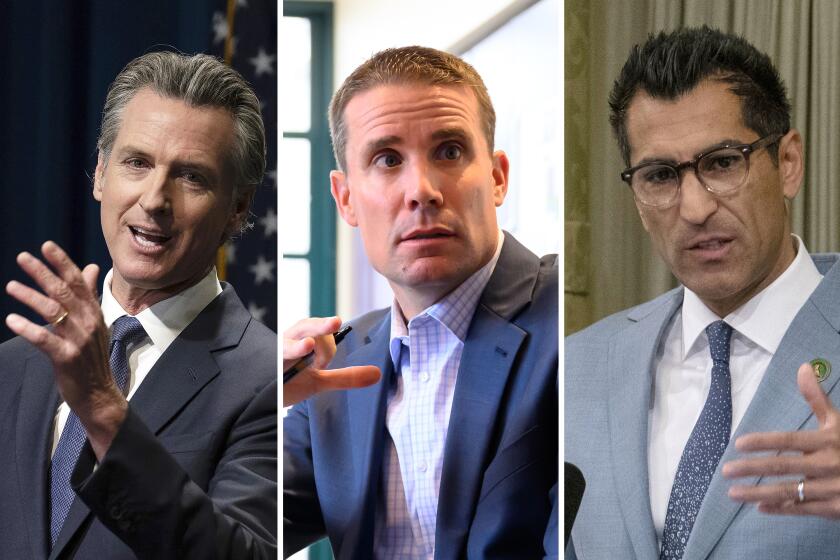
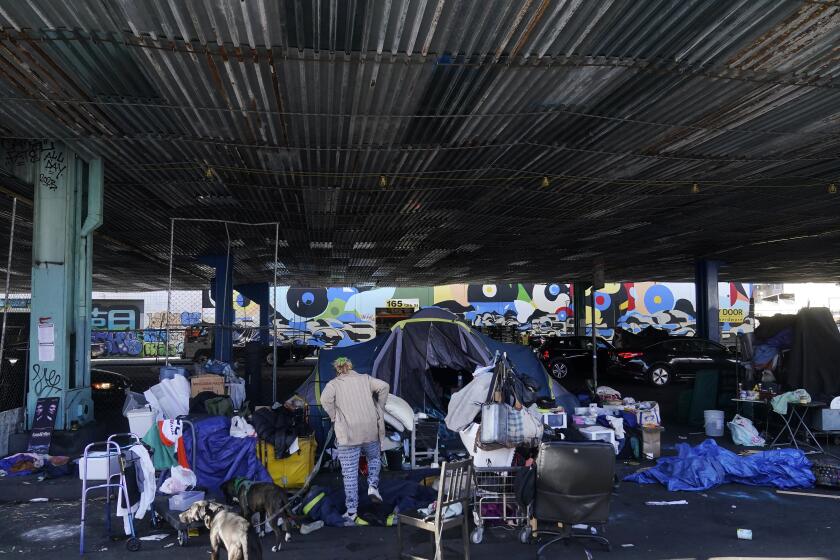
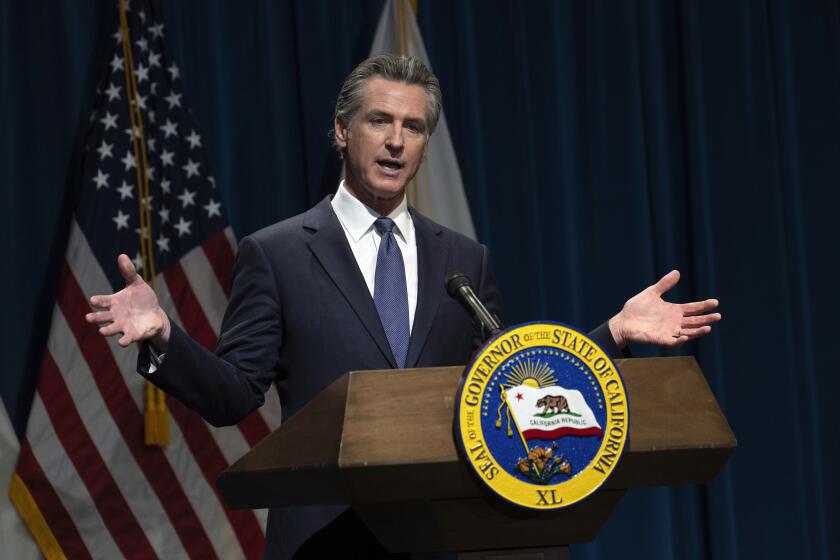
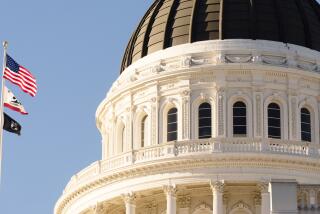




![[20060326 (LA/A20) -- STATING THE CASE: Marchers organized by unions, religious organizations and immigrants rights groups carry signs and chant in downtown L.A. "People are really upset that all the work they do, everything that they give to this nation, is ignored," said Angelica Salas of the Coalition of Humane Immigrant Rights. -- PHOTOGRAPHER: Photographs by Gina Ferazzi The Los Angeles Times] *** [Ferazzi, Gina -- - 109170.ME.0325.rights.12.GMF- Gina Ferazzi/Los Angeles Times - Thousands of protesters march to city hall in downtown Los Angeles Saturday, March 25, 2006. They are protesting against House-passed HR 4437, an anti-immigration bill that opponents say will criminalize millions of immigrant families and anyone who comes into contact with them.]](https://ca-times.brightspotcdn.com/dims4/default/34f403d/2147483647/strip/true/crop/1983x1322+109+0/resize/840x560!/quality/75/?url=https%3A%2F%2Fcalifornia-times-brightspot.s3.amazonaws.com%2Fzbk%2Fdamlat_images%2FLA%2FLA_PHOTO_ARCHIVE%2FSDOCS%2854%29%2Fkx3lslnc.JPG)





